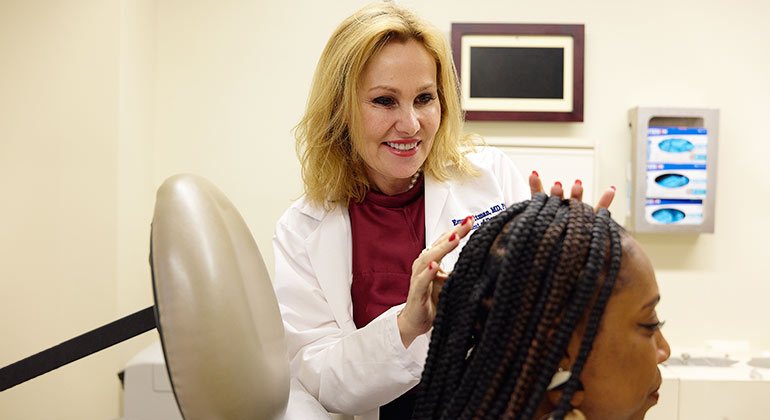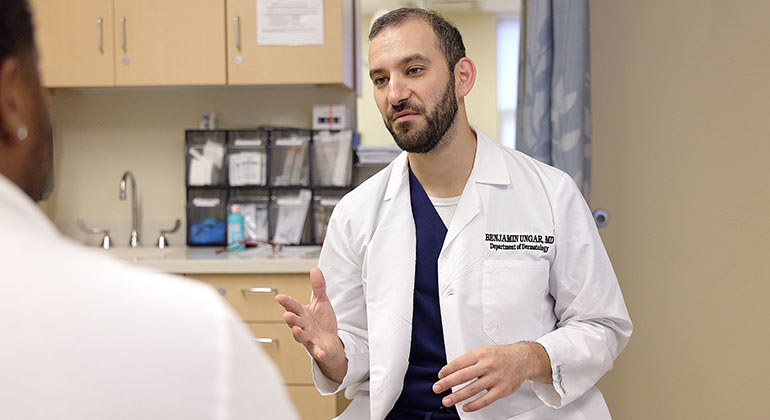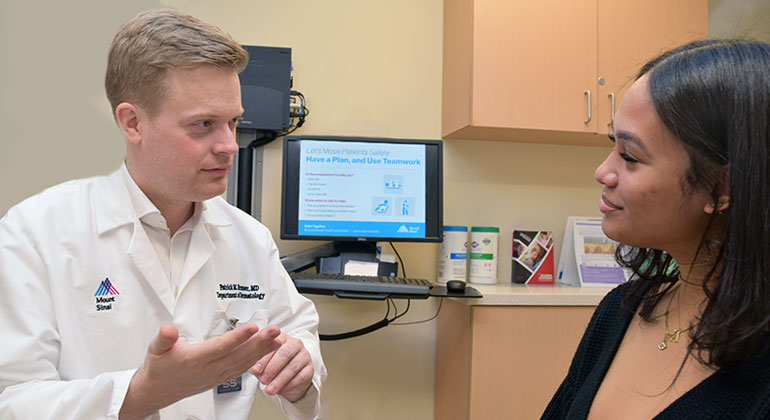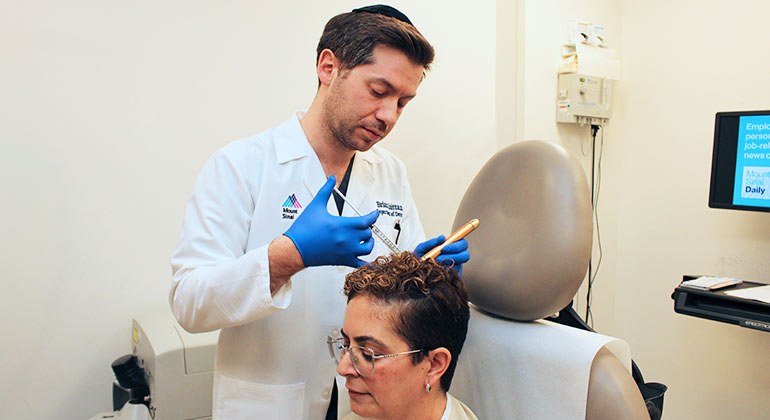Alopecia Center of Excellence




People with alopecia lose patches of hair on their scalp. Some also lose hair on their face and other areas of the body. This disease afflicts about 7 million people in the United States and often—but not always—starts in childhood or adolescence. Whenever it begins, the emotional toll of this disease can be devastating.
At the Alopecia Center of Excellence, we offer the latest treatments and are committed to providing our patients personalized care. We offer some of the safest and effective options for both male and female pattern hair loss, including:
- Medications
- PRP (Platelet-Rich Plasma) therapy
- Laser treatments
- Hair transplantation
Our team not only specializes in these treatments — we've helped develop many of them. In addition, our scientists continue to conduct groundbreaking research to develop new treatments. We participate in multiple clinical trials, which gives our patients access to new therapies that are not available otherwise. And all of this—excellent patient care, clinical, translational, and basic research, and clinical trials—takes place under one roof.
For more information about our current clinical trials, email our Clinical Research Program Director, Giselle Singer at giselle.singer@mssm.edu or call 212-241-3288.
Funding
Mount Sinai’s physician-scientists are researching new discoveries that will translate into life-changing therapies. To enable these new discoveries our donors, the Pure Family, have pledged $5 million to establish the first of its kind, centralized center integrating compassionate patient care, research, and transformative new treatments of alopecia areata.




